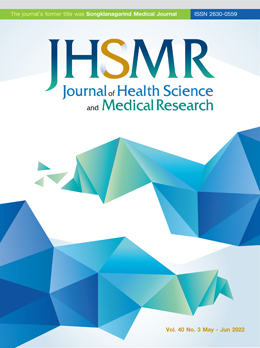Long-term Efficacy of Q-switched 1064 nm Nd-YAG Laser for Treatment of Split-thickness Skin Graft: A Randomized Controlled Trial
DOI:
https://doi.org/10.31584/jhsmr.2021840Keywords:
long-term efficacy, Q-switched 1064 nm Nd-YAG laser, split-thickness skin graft, treatmentAbstract
Objective: The aim of this study was to investigate the efficacy of the Q-switched 1064 nm Nd:YAG laser for reducing hyperpigmentation and erythema and increasing pliability in skin grafts.
Material and Methods: This was a prospective randomized controlled trial. Half of each skin graft was treated with a Q-switched 1064 nm Nd:YAG laser 4 times, and the other half was left untreated and collectively used as the controls. The treatment results were evaluated by clinical photographs, and assessment of the melanin index (MI), erythema index (EI), and elasticity parameters at baseline and at 2 weeks after each session and 1 month after the final treatment.
Results: Ten skin graft sites from 10 patients were included. Most patients had lesions at a lower extremity. After 4 sessions of treatment, average melanin index at the treated sites was non-significantly decreased compared to both baseline (p-value=0.232) and the untreated sites (p-value=0.770). The elasticity of the treated sites increased significantly when compared to baseline (p-value=0.039), but non-significantly when compared to the untreated sites (p-value=0.846). The EI at the treated sites non-significantly decreased compared to both baseline (p-value=0.432) and the untreated sites (p-value=0.164).
Conclusion: This study found the Q-switched 1064 nm Nd:YAG laser treatment to be a potentially promising modality for increasing the pliability of skin grafts, but reductions in hyperpigmentation and erythema were only clinically significant.
References
Tsukada S. The melanocytes and melanin in human skin autografts. Plast Reconstr Surg 1974;53:200-7.
Tsukada S. Studies on the pigmentation of skin grafts: the ultrastructure of epidermal melanocytes. Plast Reconstr Surg 1977;59:98-106.
Kang XL, Shen H. Pigmentation of skin graft is improved by cryopreservation of human skin with trehalose. J Oral Maxillofac Surg 2012;70:1464-72.
Worapong M. Skin laser therapy in clinical practice. Bangkok: Pimdee; 2009.
Anderson RR, Margolis RJ, Watenabe S, Flotte T, Hruza GJ, Dover JS. Selective photothermolysis of cutaneous pigmentation by Q-switched Nd:YAG laser pulses at 1064, 532 and 355 nm. J Invest Dermatol 1989;93:28-32.
Chon WC, Kim HJ, Lee HJ, Kim YH, Serk W. Treatment of nevus of Ota using low fluence Q-switched Nd:YAG laser. IJD 2014;53:861-65.
Stratigos AJ, Dover JS, Arndt KA. Laser treatment of pigmented lesions - 2000: how far have we gone? Arch Dermatol 2000; 136:915-21.
Cho SB, Park SJ, Kim JS, Kim MJ, Bu TS. Treatment of postinflammatory hyperpigmentation using 1064-nm Q-switched Nd:YAG laser with low fluence: report of three cases. J Eur Acad Dermatol Venereol 2009;23:1206-7.
Ho SGY, Yeung CK, Chan NPY, Shek SY, Kono T, Chan HHL. A retrospective analysis of the management of acne postinflammatory hyperpigmentation using topical treatment, laser treatment, or combination topical and laser treatments in oriental patients. Lasers Surg Med 2011;43:1-7.
Kim S, Cho KH. Treatment of facial post-inflammatory hyperpigmentation with facial acne in Asian patients using a Q-switched neodymium-doped Yttrium Aluminum Garnet laser. Dermatol Surg 2010;36:1374-80.
Downloads
Published
How to Cite
Issue
Section
License

This work is licensed under a Creative Commons Attribution-NonCommercial-NoDerivatives 4.0 International License.
























